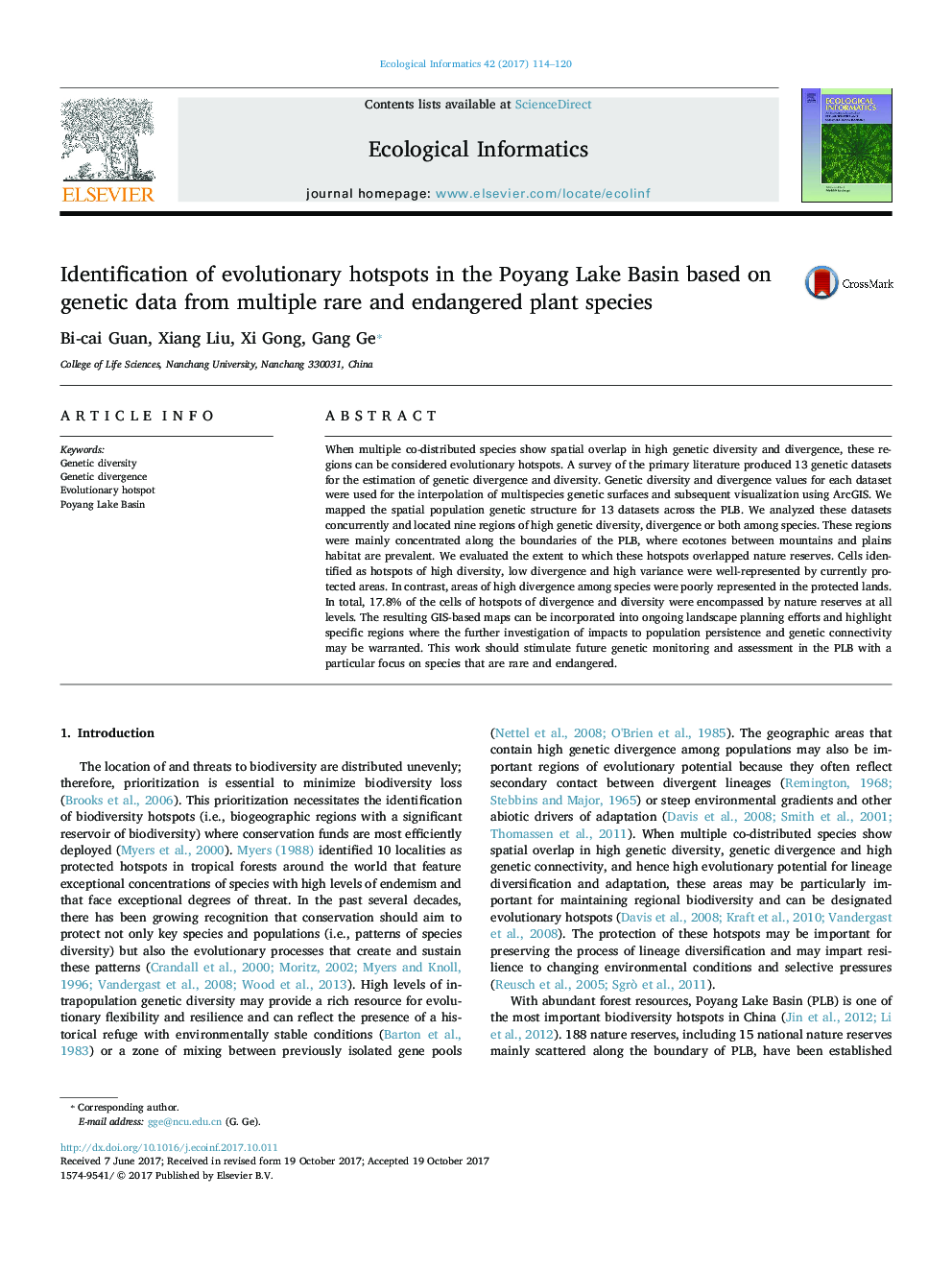| Article ID | Journal | Published Year | Pages | File Type |
|---|---|---|---|---|
| 8845891 | Ecological Informatics | 2017 | 7 Pages |
Abstract
When multiple co-distributed species show spatial overlap in high genetic diversity and divergence, these regions can be considered evolutionary hotspots. A survey of the primary literature produced 13 genetic datasets for the estimation of genetic divergence and diversity. Genetic diversity and divergence values for each dataset were used for the interpolation of multispecies genetic surfaces and subsequent visualization using ArcGIS. We mapped the spatial population genetic structure for 13 datasets across the PLB. We analyzed these datasets concurrently and located nine regions of high genetic diversity, divergence or both among species. These regions were mainly concentrated along the boundaries of the PLB, where ecotones between mountains and plains habitat are prevalent. We evaluated the extent to which these hotspots overlapped nature reserves. Cells identified as hotspots of high diversity, low divergence and high variance were well-represented by currently protected areas. In contrast, areas of high divergence among species were poorly represented in the protected lands. In total, 17.8% of the cells of hotspots of divergence and diversity were encompassed by nature reserves at all levels. The resulting GIS-based maps can be incorporated into ongoing landscape planning efforts and highlight specific regions where the further investigation of impacts to population persistence and genetic connectivity may be warranted. This work should stimulate future genetic monitoring and assessment in the PLB with a particular focus on species that are rare and endangered.
Related Topics
Life Sciences
Agricultural and Biological Sciences
Ecology, Evolution, Behavior and Systematics
Authors
Bi-cai Guan, Xiang Liu, Xi Gong, Gang Ge,
